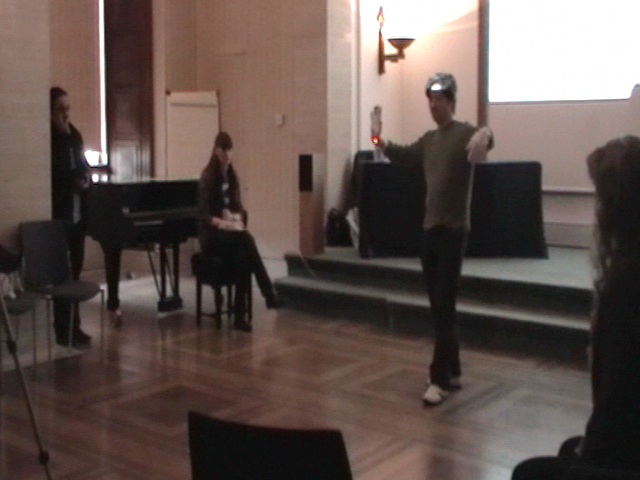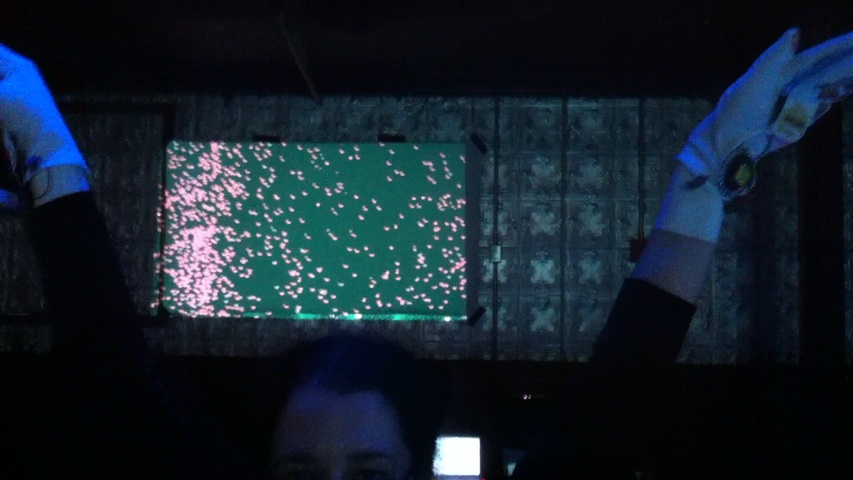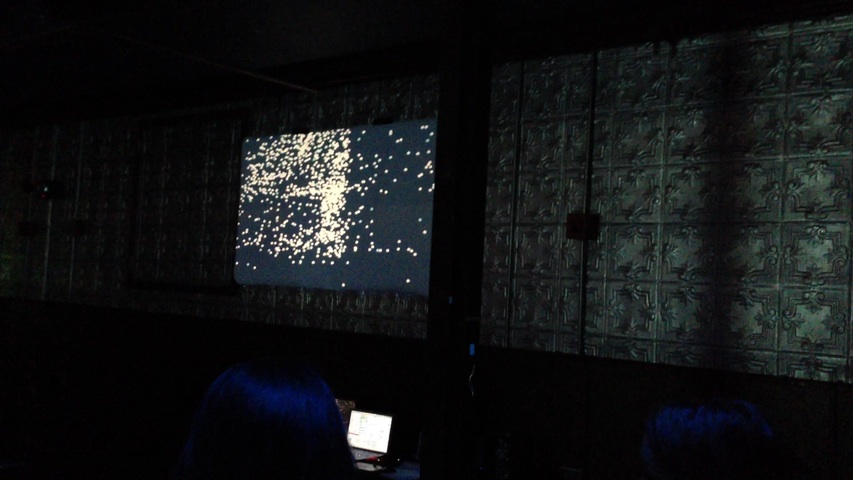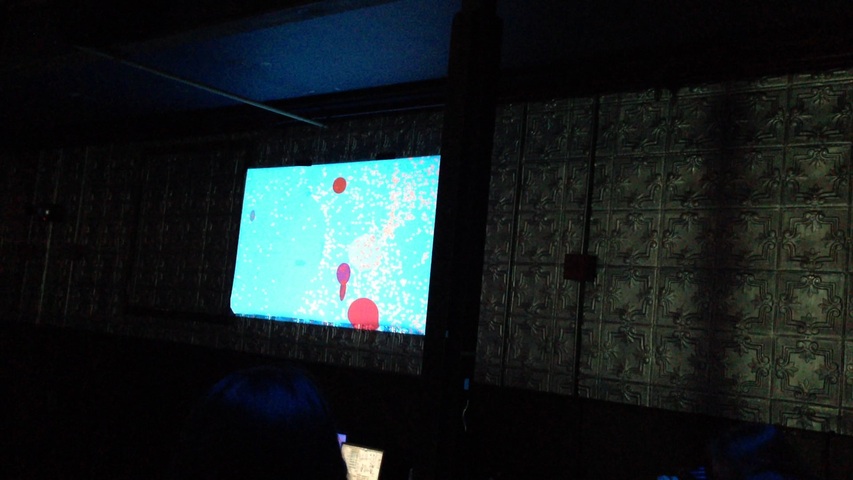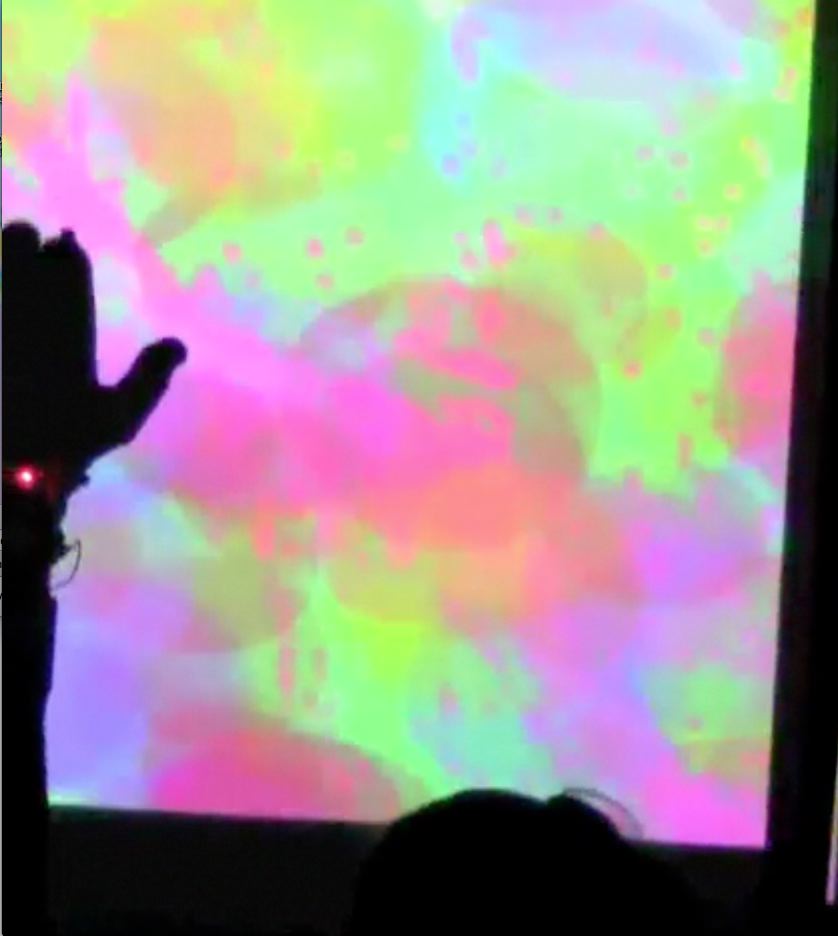
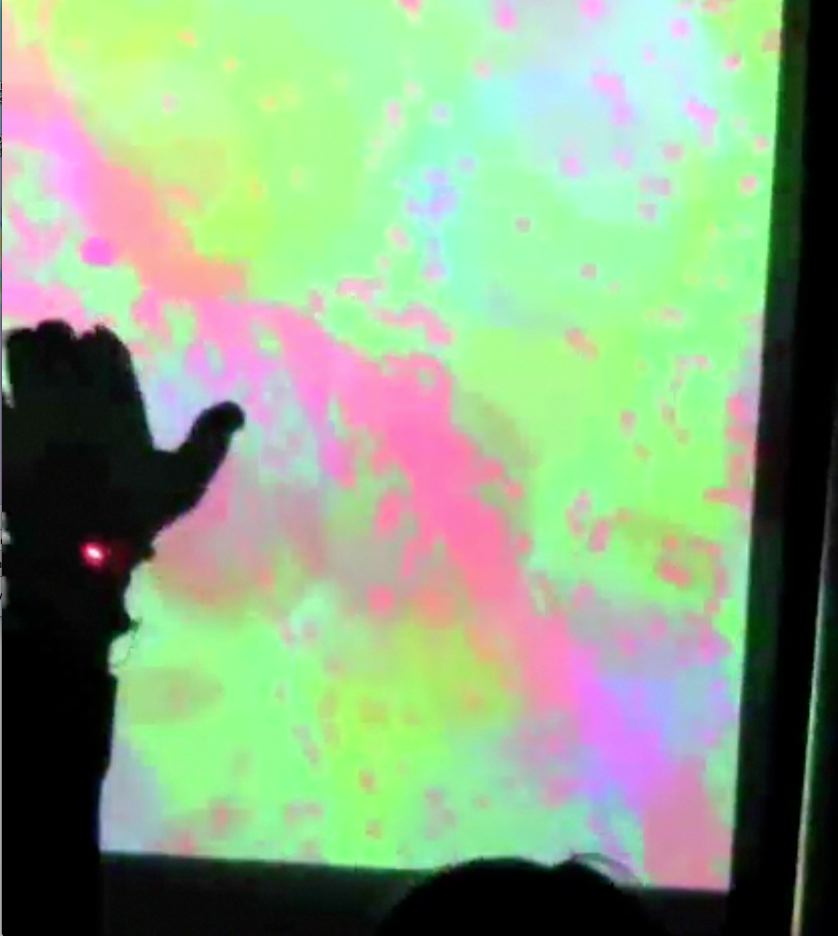

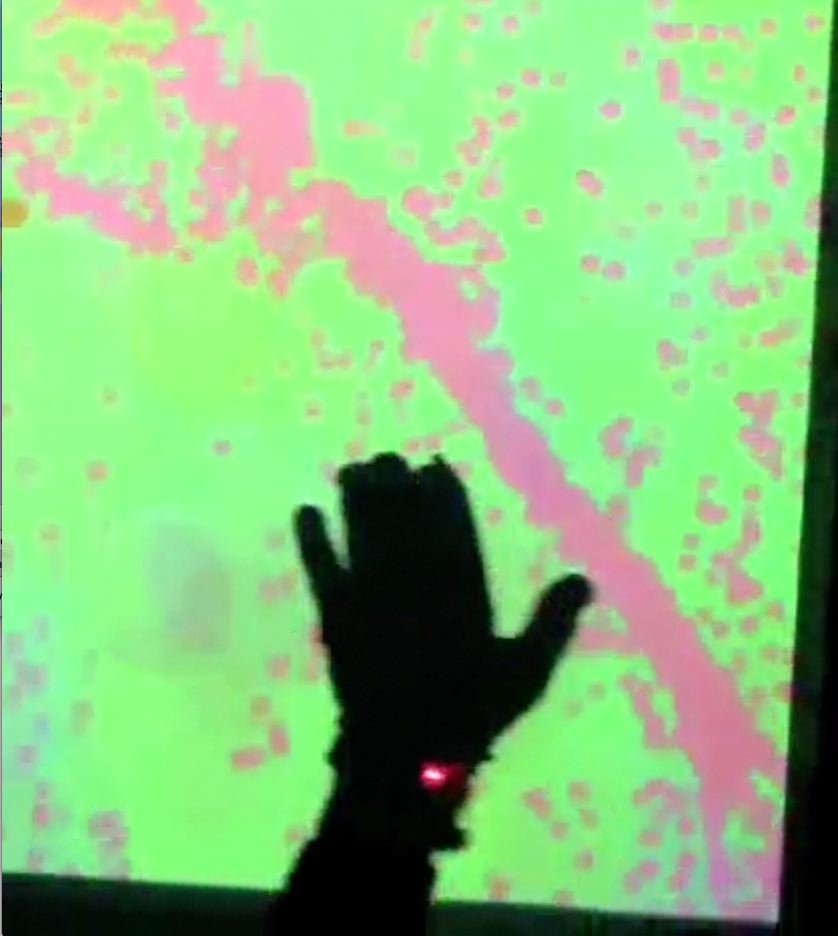

Joshua Banks Mailman and Sofia Paraskeva's
Sound and Touch of Ether's Flux:
An interactive technology, philosophy, and creative work (2012)
The Fluxations Human Body Movement Interface for Comprovisational Computer Music, in collaboration with Sofia Paraskeva, is interactive algorithmic music and graphics generated spontaneously through motion detected by an infrared video camera and custom sensor gloves.
Montreal Comprovisation No.1: (In Safari, click on the images to play videos. Or in any browser click below to load in a new window.)
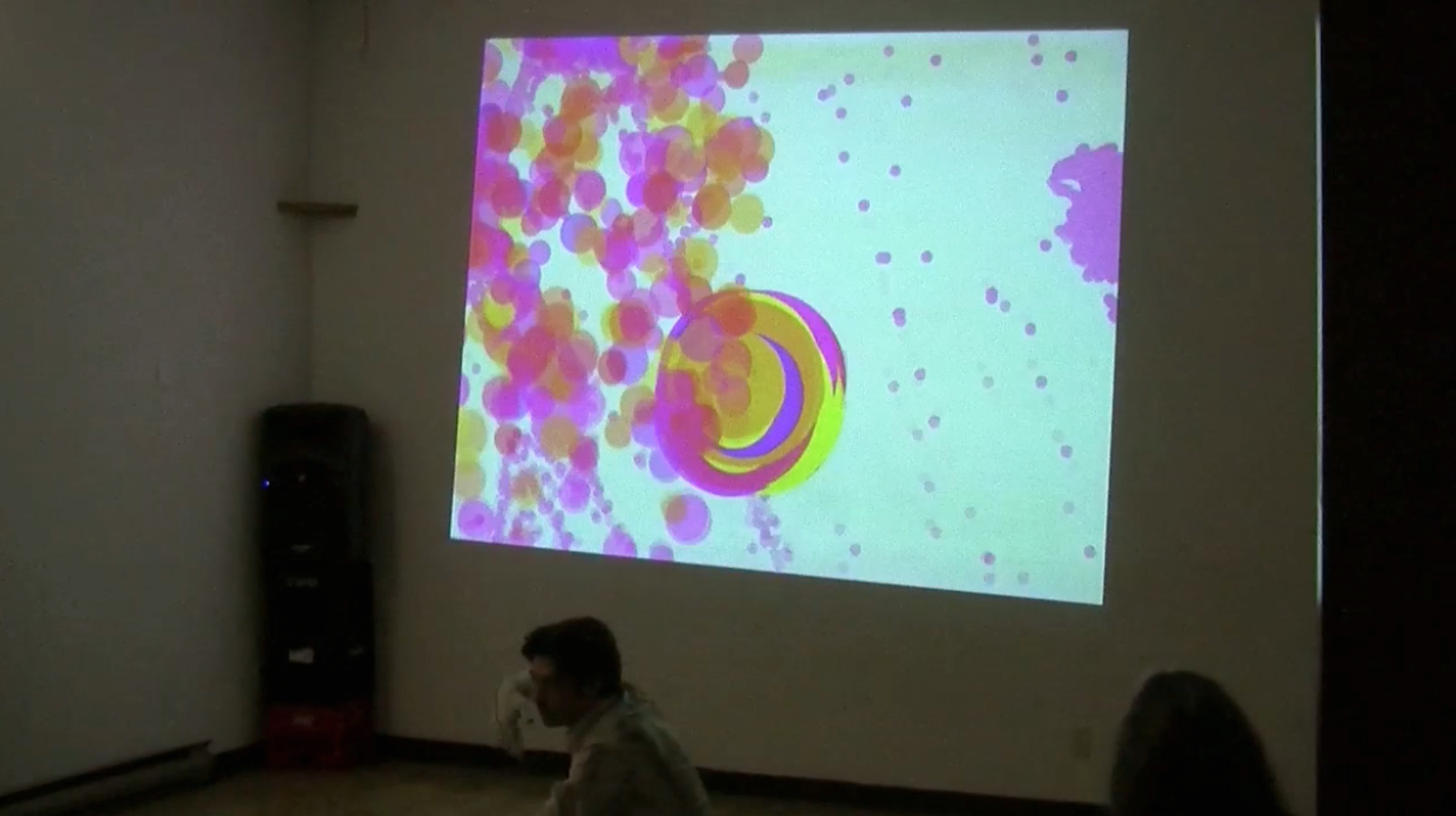
Joshua B. Mailman demonstrating Fluxations in Montreal, July 15, 2012.
Click here to view the above video in a new window.
Full Body Comprovisation No.1 (published in soundsRite v.5 (2013))
(WATCH on Vimeo for easy download. Alternatively, in any browser, look below for higher quality video or, in Safari, click the image for medium quality.)
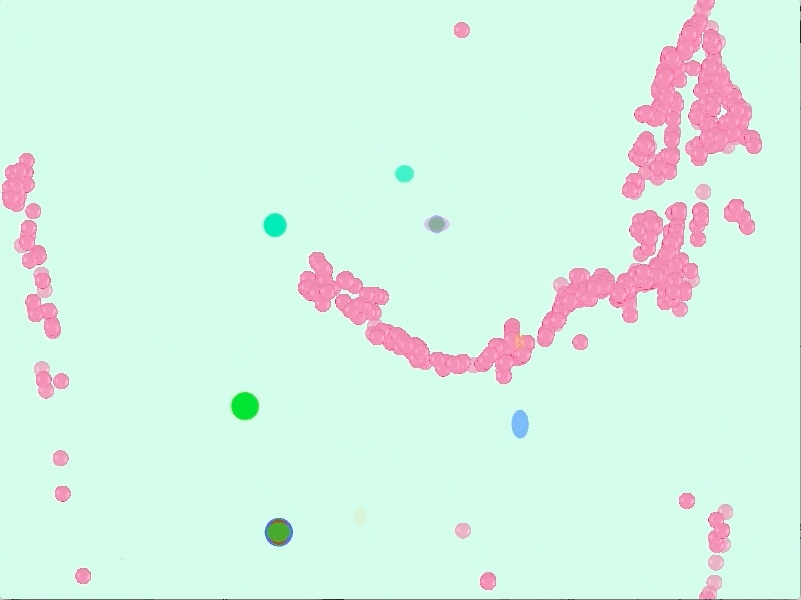
Stream at high quality from soundsRite (using Firefox or Chrome). View (medium quality) in new window.
View (or control-click to download high quality QuickTime video. Or control-click to download m4v format (medium quality) video to your computer.
Read about the video.
• Music: Cognition, Technology, Society, Cornell University, May 11-13, 2012
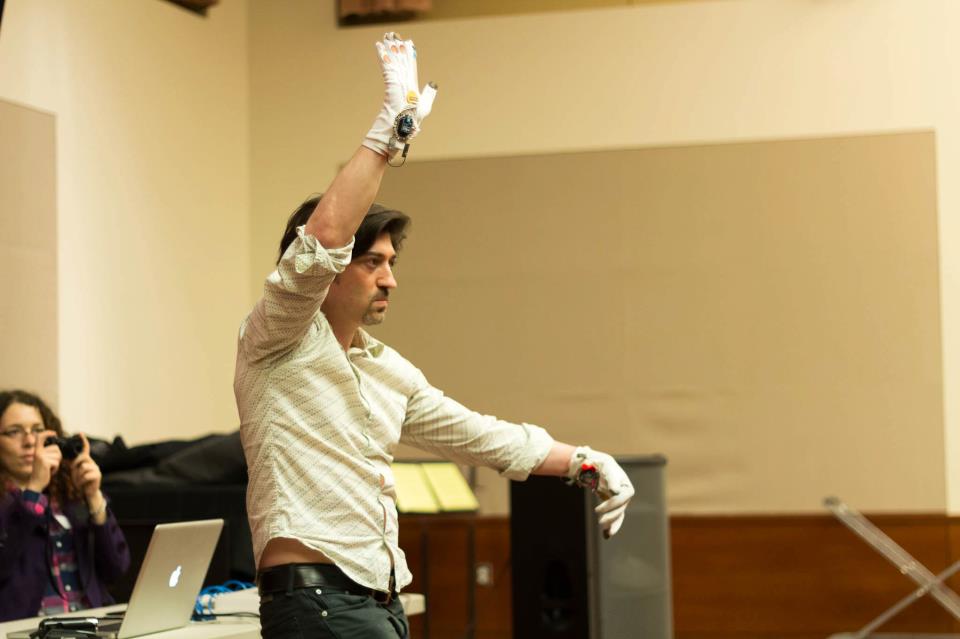
Cornell University, May 11, 2012. Photo by Evan Cortens.
• Skin-Surface-Circuit: Embodying the Improvisatory, ICASP-McGill Center for the Critical Study of Improvisation Interdisciplinary Conference, Montreal, June 14-16, 2012
Montreal Comprovisation No.2: (In Safari, click on the images to play videos. Or in any browser click below to load in a new window.)

Joshua B. Mailman demonstrating Fluxations in Montreal, July 15, 2012.
Click here to view the above video in a new window.
Firefly Fury: Marathon Fluxations Performance (In Safari, click on the image to play video. Or in any browser click below to load in new window.)
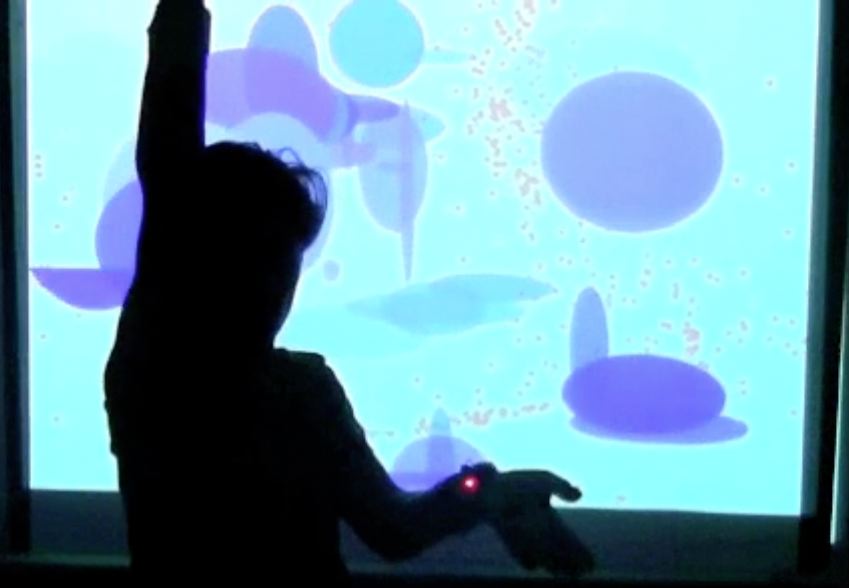
View video in a new window. Watch on vimeo or YouTube. Or control-click to download m4v format video to your computer.
Full Body Comprovisation No.2 (published in soundsRite v.5 (2013))
(WATCH on Vimeo for easy download but slightly degraded quality. Alternatively, in any browser, look below for higher quality video or, in Safari, click the image for medium quality.)
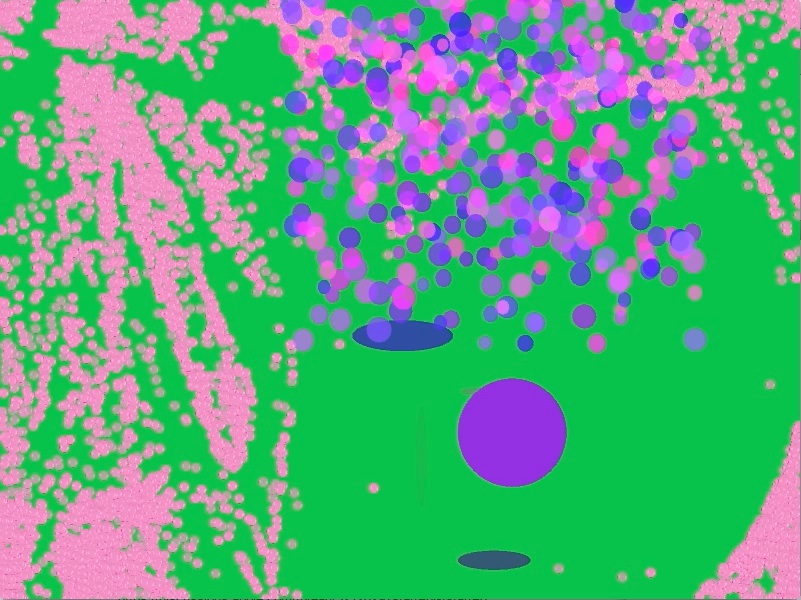
Stream at high quality from soundsRite (using Firefox or Chrome). View (medium quality) in new window.
View (or control-click to download) high quality QuickTime video. Or download m4v format (medium quality) video to your computer.
Read about the video.
